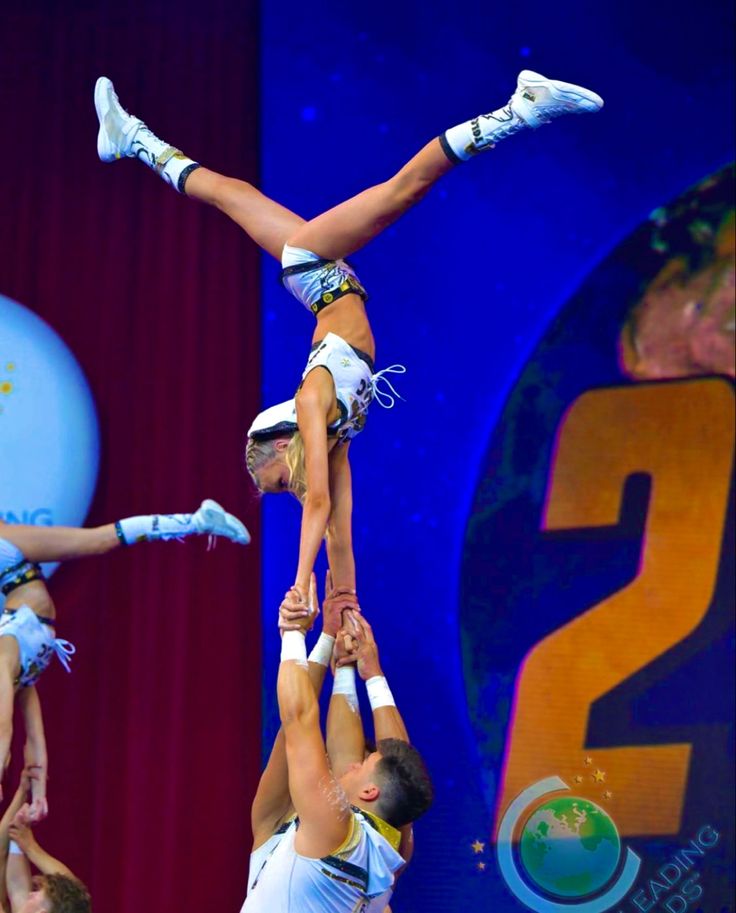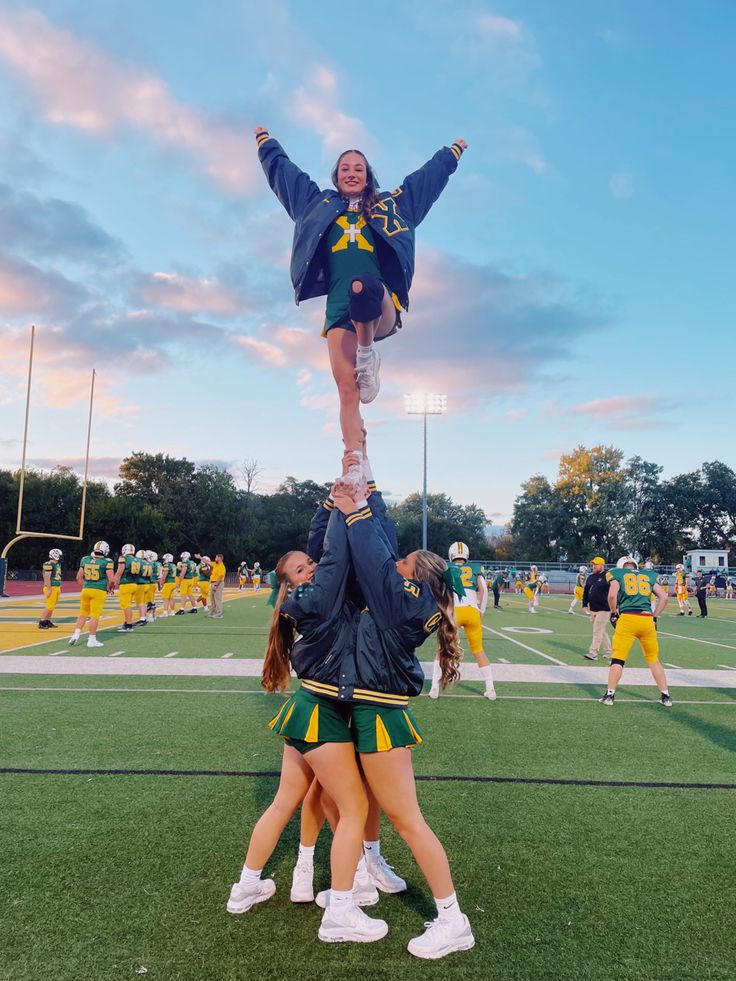Cheerleading, once brushed off as a sideline activity for fun, has undergone a significant transformation, and the debate over its status as a sport or recreational pursuit is heating up. In this exploration, let’s cut to the chase – cheerleading is undeniably a sport. As we dive into its dynamic and physically demanding world, from the challenging routines to competitive showcases, the evidence overwhelmingly supports recognizing cheerleading as a legitimate sport. Join us on this journey as we break down the tough physical aspects, come explore why the conversation around cheerleading as an official sport is gaining
Table of Contents:
- The Evolution of Cheerleading
- Physical Demands: More Than Just Cheers
- Competition Cheer: A Closer Look
- Cheerleading vs. Traditional Sports: Breaking Stereotypes
- Cheerleading Regulations and Safety Measures
- Benefits Beyond the Sidelines: Cheerleading as a Lifestyle
- The Future of Cheerleading: Recognizing its Athletic Merit
- Cheers to the Athletic Prowess of Cheerleaders
The Evolution of Cheerleading
Cheerleading, a journey that commenced as a simple sideline activity, has undergone a remarkable transformation into a dynamic and skill-intensive pursuit. Originating with the primary purpose of boosting morale during sports events, the metamorphosis of modern cheerleading is nothing short of captivating. In its infancy, cheerleading primarily consisted of spirited chants and basic routines designed to uplift the crowd. However, as the sporting landscape evolved, so did cheerleading. It evolved into a disciplined and highly choreographed activity that demands not only enthusiasm but also athleticism and precision.
The historical roots of cheerleading can be traced back to the late 19th century when organized cheers and chants began making appearances at college football games. Over the decades, the role of cheerleaders expanded beyond merely boosting team spirit. With time, they embraced more complex choreography, incorporating intricate routines and synchronized moves. The evolution was not only in response to the changing sports culture but also a testament to the creativity and athleticism of those involved in cheerleading.
Modern cheerleading now stands as a legitimate athletic pursuit, breaking away from its early stereotype as a sideline spectacle. The transformation signifies the sport’s adaptability and its ability to carve out a unique identity within the broader spectrum of athletic endeavors.
Physical Demands: More Than Just Cheers
Contrary to popular belief, cheerleading extends far beyond the enthusiastic cheers associated with it. The physical demands imposed on cheerleaders are rigorous and comprehensive. Cheerleading has evolved into a sport that has trained athletes and involves physical exertion and skill, flexibility exercises, and the mastery of complex routines that demand precision and athleticism.
The strength training aspect involves not only building muscle but also enhancing endurance and agility. Cheerleaders push the boundaries of their physical strength to execute breathtaking stunts and maneuvers with precision. Flexibility exercises form a crucial component of a cheerleader’s routine, ensuring they possess the agility and suppleness needed for dynamic and gravity-defying moves. It’s not just about waving pom-poms; it’s about sculpting bodies into peak physical condition and honing mental resilience.

The mastery of complex routines involves physical exertion and skill, elevating cheerleading from a sideline spectacle to a disciplined and demanding athletic pursuit. Cheerleaders become athletes who navigate a multifaceted challenge, seamlessly blending strength, flexibility, and artistry. The physical demands on cheerleaders showcase the athleticism required to perform at the highest level, debunking any misconceptions about the sport’s intensity.
Competition Cheer: A Closer Look
Competitive cheerleading has emerged as the heartbeat of the sport, where athleticism converges with artistry in a high-stakes environment. This facet of competition cheer has taken the spotlight with intricate routines, daring stunts, and synchronized performances that push the boundaries of what is physically possible. These competitions are not just about showcasing enthusiasm; they are a display of creativity, teamwork, and strategic planning.

Competitive cheerleading challenges the perception of cheer as merely a supportive role, where cheerleaders fight for a world or national championship. It transcends the sidelines and transforms cheerleaders into strategic athletes who meticulously plan routines, pushing the boundaries of what is physically possible. Cheerleaders compete at a collegiate level, high school level, and all-star levels. The athleticism showcased in these competitions underscores not only physical prowess but also a profound display of creativity and teamwork. It’s a form of athletic expression that demands precision, coordination, and synchronization at the highest level.
Cheerleading vs. Traditional Sports: Breaking Stereotypes
In challenging stereotypes surrounding cheerleading, it becomes evident that cheerleading shares common ground with traditional sports. The prevailing notion of cheerleading as merely an auxiliary or sideline activity is debunked as we draw explicit parallels with recognized sports. Cheerleading, like any other sport, involves physical exertion and skill.
Cheerleaders undergo rigorous training regimens that mirror those of athletes in traditional sports. The commitment required to excel in cheerleading is on par with that of athletes in more conventional sports. The team dynamics, strategic planning, and the level of athleticism involved challenge preconceived notions. It positions cheerleading not as an afterthought but as an integral and legitimate part of the broader sports landscape.
The breaking of stereotypes is not just about defending the legitimacy of cheerleading but also about recognizing the shared qualities that unite cheerleading with traditional sports. It’s a call to shift perceptions and acknowledge cheerleading as a sport that demands the same level of dedication and skill.
Cheerleading Regulations and Safety Measures
As cheerleading gains recognition, regulations and safety measures become paramount. The sport’s evolution necessitates guidelines to ensure the safety of athletes, acknowledging the inherent risks associated with cheerleading. Governing bodies have implemented comprehensive measures to address these concerns, shaping the sport into a safer and more structured athletic pursuit.
The regulatory landscape includes guidelines for stunts, tumbling, and overall team safety. Understanding the risks associated with these aspects of cheerleading, governing bodies have established rules to mitigate potential injuries. The implementation of safety measures not only safeguards the well-being of athletes but also contributes to the credibility and professionalism of cheerleading as a sport.
Benefits Beyond the Sidelines: Cheerleading as a Lifestyle
Cheerleading extends its impact beyond the sidelines, offering participants numerous benefits that go beyond the physical demands of the sport. Beyond the athleticism and competition, cheerleading becomes a way of life for those involved. It fosters character development, discipline, camaraderie, and a sense of community.
Participating in cheerleading provides individuals with opportunities for personal growth and skill development. The discipline required to master routines, the teamwork involved in stunts, and the camaraderie formed within teams contribute to building character. Cheerleaders often find themselves not only physically fit but also mentally resilient, navigating challenges and setbacks with grace.
The sense of community within the cheerleading world extends beyond the individual team or squad. It becomes a larger network of support and encouragement, creating lasting bonds among participants. The positive impact of cheerleading on individuals’ lives is a testament to its role as more than just a sport; it becomes a lifestyle that shapes the values and attitudes of those involved.
The Future of Cheerleading: Recognizing its Athletic Merit
The future of cheerleading holds the promise of increased acknowledgment for its athletic merit. As perceptions continue to evolve, it is likely that cheerleading will continue to solidify its position as a legitimate sport. The trajectory points towards a future where cheerleading is recognized for its athleticism, creativity, and competitive nature.
The evolving landscape of sports culture plays a crucial role in shaping the future of cheerleading. As awareness grows and the understanding of cheerleading as a legitimate sport deepens, the sport is poised for increased support. The anticipation is that cheerleaders will be celebrated as elite athletes, and cheerleading will take its rightful place in the diverse tapestry of athletic endeavors.

Cheers to the Athletic Feats of Cheerleaders
In conclusion, cheerleading transcends the conventional definition of a sideline activity. The intricate routines, physical demands, and competitive nature position cheerleading as a legitimate and thriving sport. As perceptions shift and awareness grows, it’s time to acknowledge the athleticism, dedication, and skill of cheerleaders. Cheers to the undeniable prowess of these athletes who have redefined what it means to be a part of the cheerleading community.